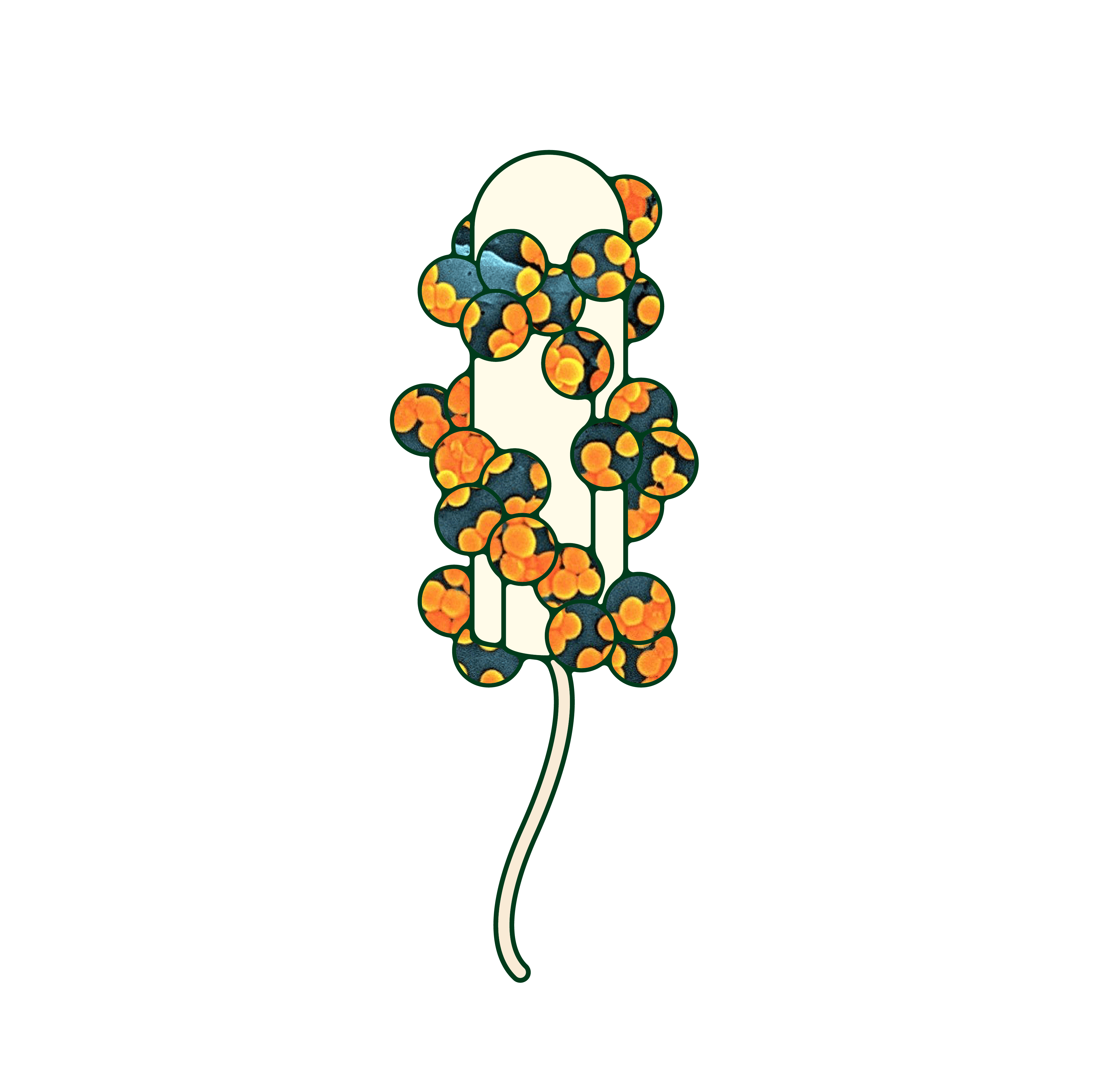Table of contents
Illustrated by Erin Rommel & Sabrina Bezerra
Anyone who menstruates will likely be well acquainted with toxic shock syndrome (TSS), a rare but fatal infection highly associated with tampons.
Whether or not you use tampons, TSS is like an urban legend: very few have experienced it IRL, but everyone knows about – and is scared of it. Unfortunately TSS is very real, but how worried should you be?
Toxic shock syndrome causes
The biggest misconception about TSS is that it’s caused by tampons, but that’s simply not true. TSS is not caused by tampons, it’s simply linked to tampons – remember: correlation does not mean causation. TSS is actually caused by Staphylococcus aureus and Streptococcus pyogenes, two bacteria commonly referred to as Staph and Strep.
However, simply being exposed to these bacteria isn’t enough to develop TSS, because Staph and Strep usually already inhabit different parts of your body, including your throat, nostrils, vagina and rectum. They are harmless unless they multiply very quickly, at which point they produce a toxin (unimaginatively) called Toxic Shock Syndrome Toxin (TSST). If TSST enters your bloodstream, they can set off an immune cascade that compromises normal organ functions and damage tissue, with potentially fatal outcomes, but this process doesn’t require tampons or menstruation in order to occur.

We're proud to be the first and only company to treat its tampons as medical devices. This means we sanitise our tampons in their final packaging. As a result, our tampons are free from the pathogens and toxins associated with vaginal infections and Toxic Shock Syndrome (TSS). Give the safest tampon on the market a try.


Toxic shock syndrom symptoms
TSS typically manifests with a rapid onset of:
- flu-like symptoms, including sudden fever, chills
- low blood pressure
- headache
- muscle aches
- vomiting and/or diarrhoea.
- A rash similar to sunburn, that is typically more severe over the palms of your hands and soles of your feet.
How do you get toxic shock from a tampon?
“The risk of developing TSS, whether it’s menstrual or non-menstrual, is about 1 in a million,” explains Dr. Harry Baxter, Daye’s Deputy Head of Research.
“Most non-menstrual cases are associated with burns or skin and soft tissue infections and appear to affect males and females equally.” TSS can affect anyone, whether they’re a menstruating human, a man, or child. So why do tampons get such a bad rap?
We still don’t know exactly how tampons are linked to the development of TSS, but the theory is that when left inside your vagina for too long, tampons create the perfect breeding ground for Staph bacteria to flourish and take over.
However, this is true for any device that is inserted in the vagina, and left there for a prolonged period of time. In fact, menstrual cups and barrier methods of contraception like caps and diaphragms are not risk-free, and have also been linked to TSS.
“Obviously, overgrowth of bad bacteria causes other issues beyond TSS, and would increase your risk of bacterial vaginosis and thrush,” warns Dr. Baxter, which is why you should change your tampon every 4-8 hours.

Not only is TSS not caused by tampons, but it’s incredibly rare, because your immune system does a great job at protecting you from it. “Most people produce an antibody that protects against Toxic Shock Syndrome Toxin,” Dr. Baxter explains. “To develop TSS, you both need the toxin and have to be unlucky enough to not have the antibody,” and that’s quite a rare combination. On top of that, the good bacteria in your vaginal microbiome fight off bad bacteria like Staph.
“Your good bacteria (Lactobacilli) are constantly on the lookout for bad bacteria (Staph aureus), and are very good at keeping things under control,” adds Dr. Baxter. “Things go awry when we make the good bacteria's job harder than it needs to be, for example by leaving a tampon or menstrual cup in for longer than advised, giving Staph a hiding place to grow, or regularly wiping out the good bacteria – I'm looking at you, vaginal douching.”
TSS became ~a thing~ in the ‘80s, after a major outbreak in the US was linked to a super-absorbent brand of tampon called Rely. Shortly after, the FDA began requiring more stringent testing standards in tampons and Rely were removed from the market, but from that moment TSS became infamously linked to tampon use.
In the UK, non-menstrual TSS is now more common than menstrual TSS, but even though your risk of developing TSS may be tiny, that doesn’t mean you should completely disregard the treat. “The numbers talked about for TSS are hard to get your head around,” explains Dr. Baxter. “It's incredibly rare but has a relatively high mortality rate – 6% of menstrual TSS patients died in the UK between 2008-2012.
So the chances of you contracting it are tiny, but it matters a lot to the government and healthcare system. When you’re looking after millions of menstruating people, 6% of less than 1 in a million starts to add up.” That's why Daye tampons are sanitised with gamma rays – routinely used in medical settings – in order to reduce the risk of TSS.
“But it's important that the average user doesn't worry too much about TSS - remember that you're more likely to win the lottery,” says Dr. Baxter. Keep that in mind the next time you panic because you’ve left your tampon in for too long… but please go change it anyway!
TL;DR
- Toxic shock syndrome is not caused by tampons themselves, but rather by an overgrowth of Staphylococcus aureus and Streptococcus pyogenes, bacteria that already lives in your body.
- Anything left in the vaginal canal for too long can encourage the development of bad bacteria such as Staph. aureus (which causes TSS), whether that’s tampons, menstrual cups or diaphragms.
- Your chances of developing TSS are about 1 in a million, and most reported cases of TSS in the UK are not linked to menstruation.
- To minimise your risk of TSS remember to change it every 4-8 hours.






